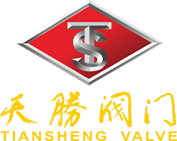Date: 2012.11.14 Views: 441
How to select the correct valves?
So far as we know valve industry, it can be able to produce the full range of butterfly valves, gate valves, globe valves, ball valves, check valves, hydraulic control valves, power station valves, over 3000 models, more than 4000 specifications of valve products; maximum working pressure of 600MPa, the largest nominal diameter up to 5350mm, the maximum operating temperature of 1200 ° C, minimum operating temperature of -196 ° C, applicable to water, steam, oil, natural gas, strong corrosive media (such as concentrated nitric acid, concentration of sulfuric acid, etc.), flammable media (such as stupid, ethylene, etc.), toxic media (such as hydrogen sulfide), explosive medium and radioactive media (sodium metal - pure water loop, etc.). The valve materials are bronze, cast iron, ductile iron, high silicon cast iron, cast steel, forged steel, high alloy steel and low alloy steel, stainless acid resistant steel, Hastelloy, Inconel, Monel, Duplex stainless steel, titanium, and so on. And can able to produce all kinds of electric, pneumatic, hydraulic valve actuators.
Facing with so many valves variety and complexity of a variety of conditions, how to select the correct valve? How to select the most suitable valve products for pipeline system. I think, we should first understand the characteristics of the valve; Secondly, we should master the steps and basis of the choice of valve ; Furthermore, should follow the principle of choice of the valve.
1. Valve characteristics are generally two types. They are use characteristics and structural properties.
Usage characteristics:it determines that the valve performance and the usage range, belonging to the valve’s features are: the valve category (on/off valves, regulating valves, safety valves, etc.); type of product (gate valve, globe valves, butterfly valves, ball valves, etc.); the material of the valve parts (body, bonnet, stem, disc, seat); the driving manner.
Structural characteristics:it identified a number of structural features of the valve installation, repair, maintenance and other methods, the structural characteristics has the length of the structure and the overall height of the valve and pipe connection type (flange connection, threaded connection, wafer connection, welded connection); the sealing surfaces have (Welded ring, threaded ring, overlay welded, spray welded, integral seat); stem structure (rotating stem or lifting stem etc.)
The steps and basis are generally as follows:
The steps how to select
1. to make clear the usage of the valve for the device and pipeline, to definite the valve working conditions, the applicable media, working pressure, temperature, and so on.
2. to definite the valve nominal diameter and connection type with the pipe: flange, threaded, welded, etc.
3. to definite the operation manner: manual, electric, electromagnetic, pneumatic or hydraulic, electro-hydraulic linkage and so on.
4. According to flow medium of the pipeline, working pressure, operating temperature to definite the body and internal parts materials: gray iron, malleable iron, ductile iron, carbon steel, alloy steel, stainless acid resistant steel, copper alloy and so on.
5. Select the valve category: on/off valves, regulating valves, safety valves, etc.
6. To definite the valve type: gate valve, globe valve, ball valve, butterfly valve, throttle valve, safety valve, pressure reducing valves, steam traps, etc..
The basis of the valve how to choose
After to understand the steps how to choose, but also to further understand the basis of the choice of valve.
1. the usage of the valve selected, the working conditions and the operation mode.
2. the nature of the working medium: working pressure, operating temperature, corrosion performance, whether it contains solid substances, whether the media is toxic or not, whether it is flammable, explosive media, the viscosity of the medium etc.
3. the valve flow characteristics: flow resistance, the discharge capacity, flow characteristics, sealing levels and so on.
4. mounting dimensions and outline dimension requirements: nominal diameter, pipeline connections ends and connection dimensions, size or weight restrictions.
5. The additional requirements, likely reliability, service life, and electric devices whether require explosion-proof performance etc.
We use cookies to enhance your browsing experience, serve personalized ads or content, and analyze our traffic. By clicking "Accept All", you consent to our use of cookies.

